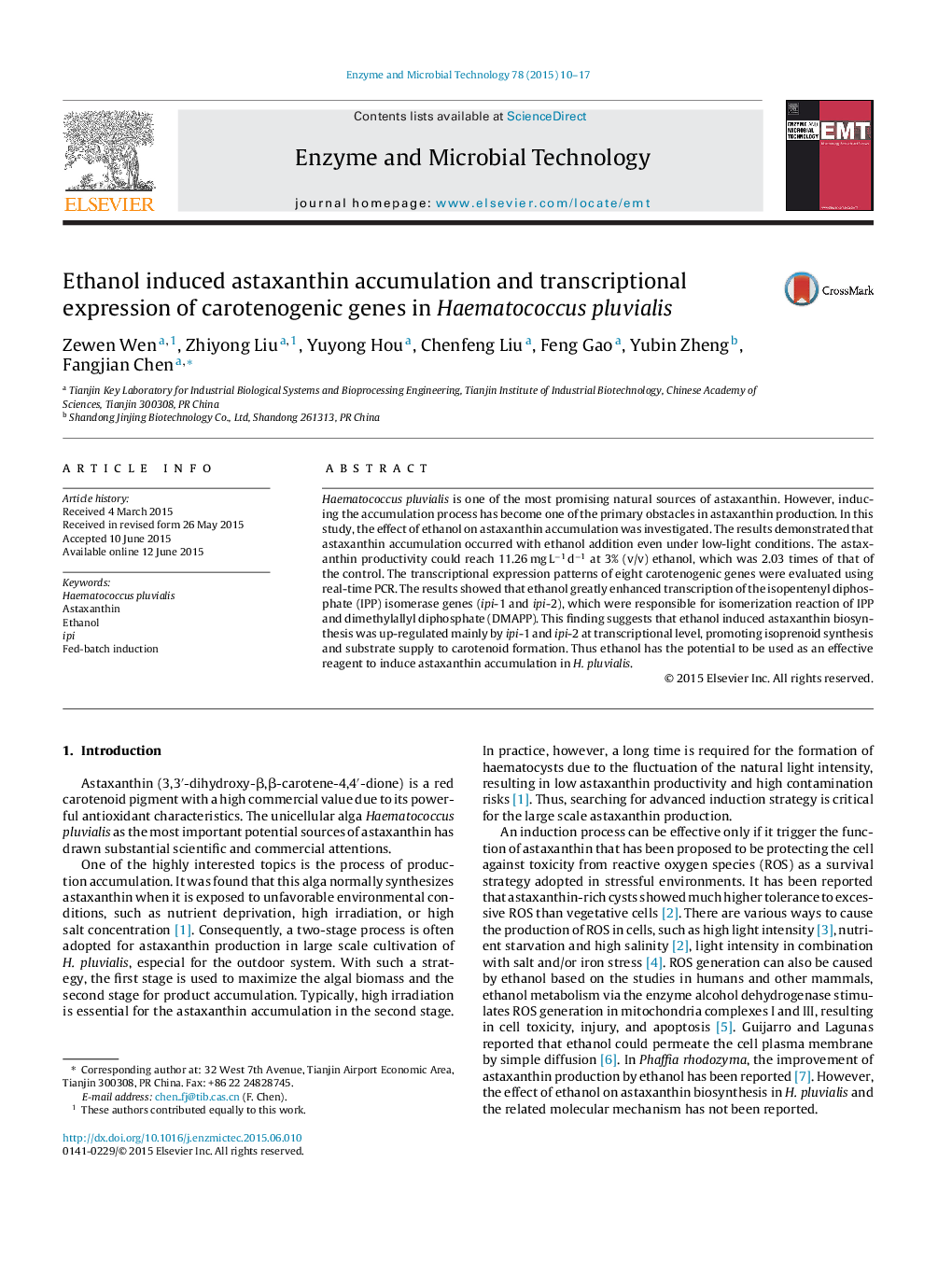| Article ID | Journal | Published Year | Pages | File Type |
|---|---|---|---|---|
| 16843 | Enzyme and Microbial Technology | 2015 | 8 Pages |
•Ethanol had positive effect on astaxanthin accumulation of H. pluvialiseven under low light intensity (25 μmol m−2 s−1)•Maximum increment of astaxanthinproductivity was11.26 mg L−1 d−1•Ethanol greatly enhanced transcription of ipi-1 and ipi-2•An ethanol fed-batch induction method was developed
Haematococcus pluvialis is one of the most promising natural sources of astaxanthin. However, inducing the accumulation process has become one of the primary obstacles in astaxanthin production. In this study, the effect of ethanol on astaxanthin accumulation was investigated. The results demonstrated that astaxanthin accumulation occurred with ethanol addition even under low-light conditions. The astaxanthin productivity could reach 11.26 mg L−1 d−1 at 3% (v/v) ethanol, which was 2.03 times of that of the control. The transcriptional expression patterns of eight carotenogenic genes were evaluated using real-time PCR. The results showed that ethanol greatly enhanced transcription of the isopentenyl diphosphate (IPP) isomerase genes (ipi-1 and ipi-2), which were responsible for isomerization reaction of IPP and dimethylallyl diphosphate (DMAPP). This finding suggests that ethanol induced astaxanthin biosynthesis was up-regulated mainly by ipi-1 and ipi-2 at transcriptional level, promoting isoprenoid synthesis and substrate supply to carotenoid formation. Thus ethanol has the potential to be used as an effective reagent to induce astaxanthin accumulation in H. pluvialis.
